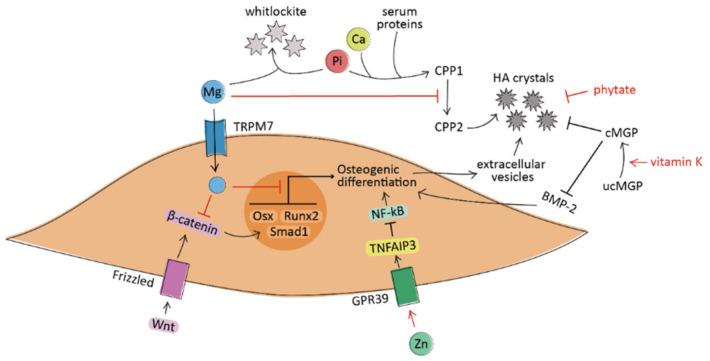Figure 1.
A simplified schematic representation of the processes under investigation leading to the osteogenic differentiation of VSMCs in vascular calcification. Magnesium (Mg) acts at the extracellular level by preventing the maturation of calciprotein particles (CPPs) and by forming whitlockite crystals with phosphate ions (Pi). At the intracellular level, Mg decreases the expression of osteogenic genes (such as Osterix, Smad1, and Runx2) and inhibits pro-calcific pathways (including Wnt/β-catenin). Zinc (Zn) induces the suppression of NF-κB through the activation of the GPR39/TNFAIP3 signaling pathway. Vitamin K promotes the carboxylation and activation of the matrix Gla protein (MGP), which avoids the formation of hydroxyapatite (HA) crystals and prevents the pro-calcific action of BMP-2. Phytate acts as crystallization inhibitor by binding to HA crystals. The regular arrow denote “activation”, and the T-shaped arrow stands for “inhibition”.

